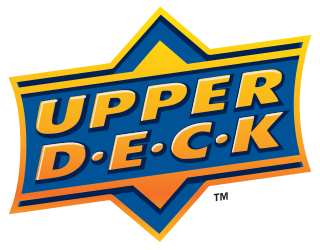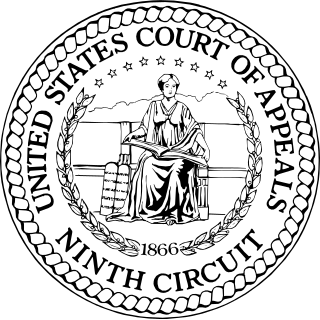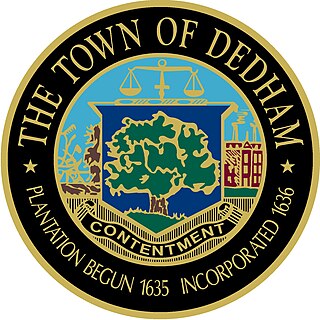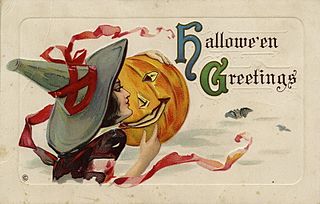
A Christmas card is a greeting card sent as part of the traditional celebration of Christmas in order to convey between people a range of sentiments related to Christmastide and the holiday season. Christmas cards are usually exchanged during the weeks preceding Christmas Day by many people in Western society and in Asia. The traditional greeting reads "wishing you a Merry Christmas and a Happy New Year". There are innumerable variations on this greeting, many cards expressing more religious sentiment, or containing a poem, prayer, Christmas song lyrics or Biblical verse; others focus on the general holiday season with an all-inclusive "Season's greetings". The first modern Christmas card was by John Calcott Horsley.
An E-card is similar to a postcard or greeting card, with the primary difference being that it is created using digital media instead of paper or other traditional materials. E-cards are made available by publishers usually on various Internet sites, where they can be sent to a recipient, usually via e-mail. It is also considered more environmentally friendly compared to traditional paper cards. E-card businesses are considered environmentally friendly because their carbon footprint is generally much lower compared to paper card companies because paper is not used in the end product.
Sweetest Day is a holiday that is celebrated in the Midwestern United States, and parts of the Northeastern United States, also in the northern part of Florida on the third Saturday in October. It is a day to share romantic deeds or expressions, and acts of charity and kindness. Sweetest Day has also been referred to as a "Hallmark holiday" or a "concocted promotion" created by the candy industry solely to increase sales of sweets.

The Care Bears are a fictional group of multi-colored bear characters, originally painted in 1981 by artist Elena Kucharik to be used on greeting cards from American Greetings but in 1983, the characters were turned into plush teddy bears.
American Greetings Corporation is a privately owned American company and is the world's second largest greeting card producer behind Hallmark Cards. Based in Westlake, Ohio, a suburb of Cleveland, the company sells paper greeting cards, electronic greeting cards, party products, and electronic expressive content. In addition, the company owns the Carlton Cards, Tender Thoughts, Just For You, and Gibson brands.

A greeting card is an illustrated piece of card stock or high quality paper featuring an expression of friendship or other sentiment. Although greeting cards are usually given on special occasions such as birthdays, Christmas or other holidays, such as Halloween, they are also sent to convey thanks or express other feelings. Greeting cards, usually packaged with an envelope, come in a variety of styles. There are both mass-produced as well as handmade versions that are distributed by hundreds of companies large and small. While typically inexpensive, more elaborate cards with die-cuts or glued-on decorations may be more expensive.

The Upper Deck Company, LLC, founded in 1988, is a private company primarily known for producing trading cards. Its headquarters are in Carlsbad, California, United States.

A Christmas stamp is a postage stamp with a Christmas theme, intended for use on seasonal mail such as Christmas cards. Many countries of the world issue such stamps, which are regular postage stamps and are usually valid for postage year-round. They usually go on sale some time between early October and early December, and are printed in considerable quantities.

Friendship Day is a day in several countries for celebrating friendship.
Tasha Tudor was an American illustrator and writer of children's books.
In the United States, a Hallmark holiday is a holiday that is perceived to exist primarily for commercial purposes, rather than to commemorate a traditionally or historically significant event. The name comes from Hallmark Cards, a privately owned American company, that benefits from such manufactured events through sales of greeting cards and other items. Holidays that have been referred to as "Hallmark holidays" include Valentine's Day, Mother's Day, Father's Day, Grandparents Day, Sweetest Day, Boss's Day, Administrative Professionals' Day, Teacher Appreciation Day, International Women's Day, and International Men's Day. The Hallmark corporation maintains that it "can't take credit for creating holidays."

The Christmas season, also called the holiday season, or the festive season, is an annually recurring period recognized in many Western and other countries that is generally considered to run from late November to early January. It is defined as incorporating at least Christmas, usually New Year, and sometimes various other holidays and festivals. It also is associated with a period of shopping which comprises a peak season for the retail sector and a period of sales at the end of the season. Christmas window displays and Christmas tree lighting ceremonies when trees decorated with ornaments and light bulbs are illuminated are traditions in many areas.

Christmas Island, Nova Scotia (Scottish Gaelic: Eilean na Nollaig) is a Canadian community of the Cape Breton Regional Municipality on Cape Breton Island, Nova Scotia. It has a post office, a firehall and a very small population. It has a beach with access to the Bras d'Or Lake. A small island just off shore, also named Christmas Island, encloses Christmas Island Pond, a pond that runs into the lake.

Hallmark Business Connections, formerly Hallmark Business Expressions is a subsidiary of Hallmark Cards, headquartered in Kansas City, Missouri. Hallmark Business Connections targets businesses who use greeting cards. The company specializes in creating custom business greeting cards.

Hallmark Cards, Inc. is a private, family-owned American company based in Kansas City, Missouri. Founded in 1910 by Joyce Hall, Hallmark is the oldest and largest manufacturer of greeting cards in the United States. In 1985, the company was awarded the National Medal of Arts.

Strawberry Shortcake is a cartoon character originally used in greeting cards, but who was later expanded to include dolls, posters, and other products. The Strawberry Shortcake properties also include a toy line of the character's friends and pets. In addition, the franchise has spawned television specials, animated television series, and films. The franchise is currently owned by the Canadian children's television company WildBrain and American brand management company, Iconix Brand Group through the holding company Shortcake IP Holdings LLC.
Cards was a card creation application developed by Apple Inc. for iOS 5. Cards was released to the general public on October 12, 2011. The application was discontinued on September 10, 2013.

Roth Greeting Cards v. United Card Co., 429 F.2d 1106, was a Ninth Circuit case involving the copyright of greeting cards that introduced the "total concept and feel" standard for determining substantial similarity. Courts used this test in later cases such as Reyher v. Children's Television Workshop (1976).

The Rust Craft Greeting Card Company was an American greeting card, printing company and owner of television stations. It produced what is believed to be the first Christmas card.

A Halloween card is a greeting card associated with Halloween. The concept originated in the 1890s United States, experiencing a peak of popularity there in the early 1900s. Until the advent of the common home telephone, Halloween cards occupied a role similar to Christmas cards and birthday cards. Today, many cards from the popular designers of the period are sought after as memorabilia.














